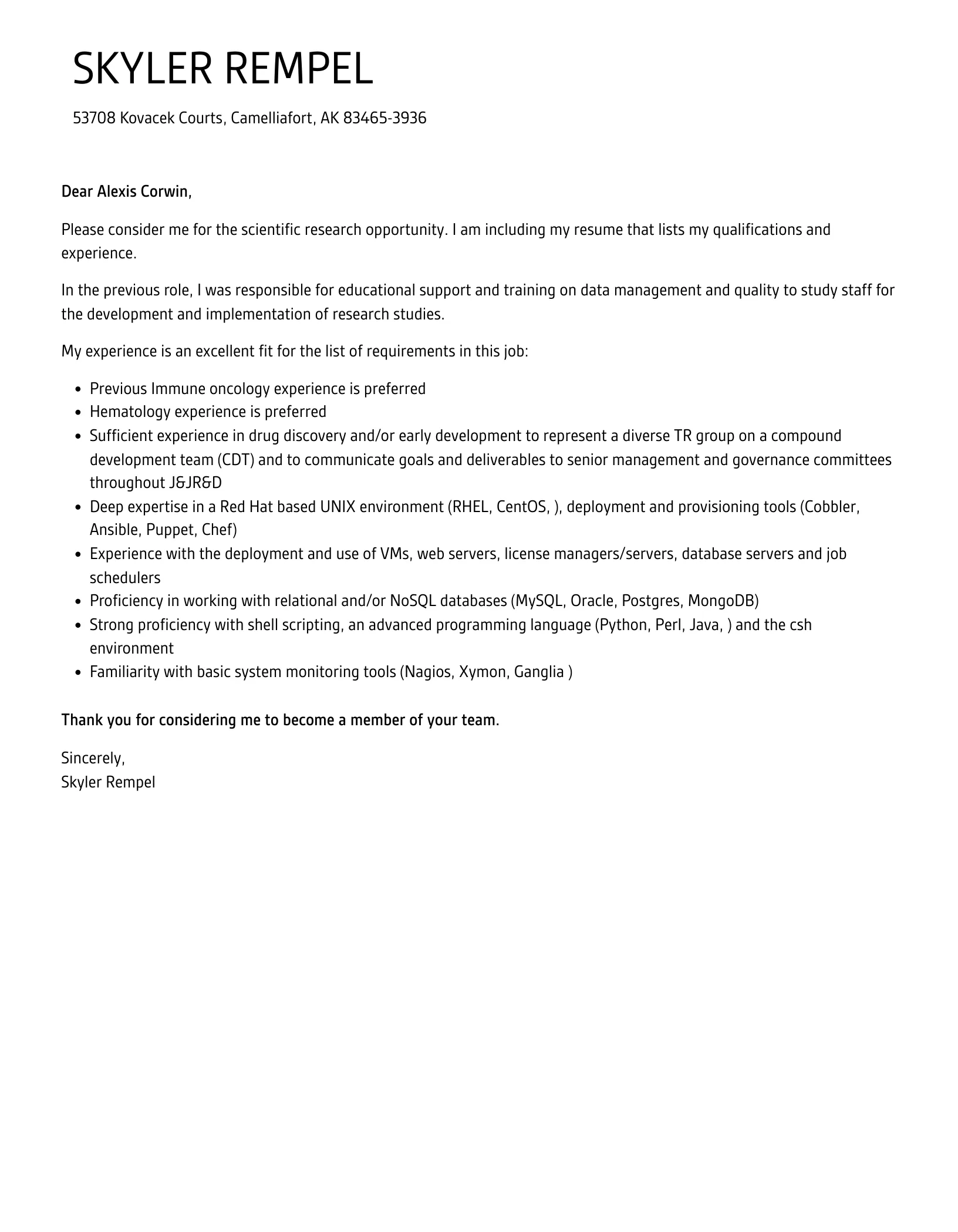Understanding the Importance of a Scientific Cover Letter
In the competitive world of scientific research and academia, a well-crafted cover letter is not merely a formality it’s a critical tool that can significantly impact your job application. It serves as your first introduction to a potential employer, providing an opportunity to showcase your skills, experience, and passion for the specific role or opportunity. Unlike a resume, which presents a factual summary of your qualifications, a cover letter allows you to elaborate on your achievements, explain your motivations, and demonstrate how your expertise aligns with the employer’s needs. Failing to recognize and utilize the power of a strong scientific cover letter can be a significant detriment to your job search.
What is a Scientific Cover Letter?
A scientific cover letter is a specialized type of cover letter tailored specifically for applications in scientific fields. It goes beyond a generic introduction, focusing on the applicant’s research experience, technical skills, and contributions to the scientific community. It acts as a bridge between your resume and the potential employer, offering a deeper understanding of your qualifications and suitability for the position. The letter aims to highlight relevant publications, presentations, grants, and any other achievements demonstrating your aptitude and dedication to scientific inquiry. A well-written scientific cover letter showcases your ability to communicate complex scientific concepts clearly and concisely, a crucial skill in any research-oriented role. It is more than a summary of your resume, it is your opportunity to tell your story and demonstrate your unique value to the hiring manager.
Why is a Scientific Cover Letter Important?
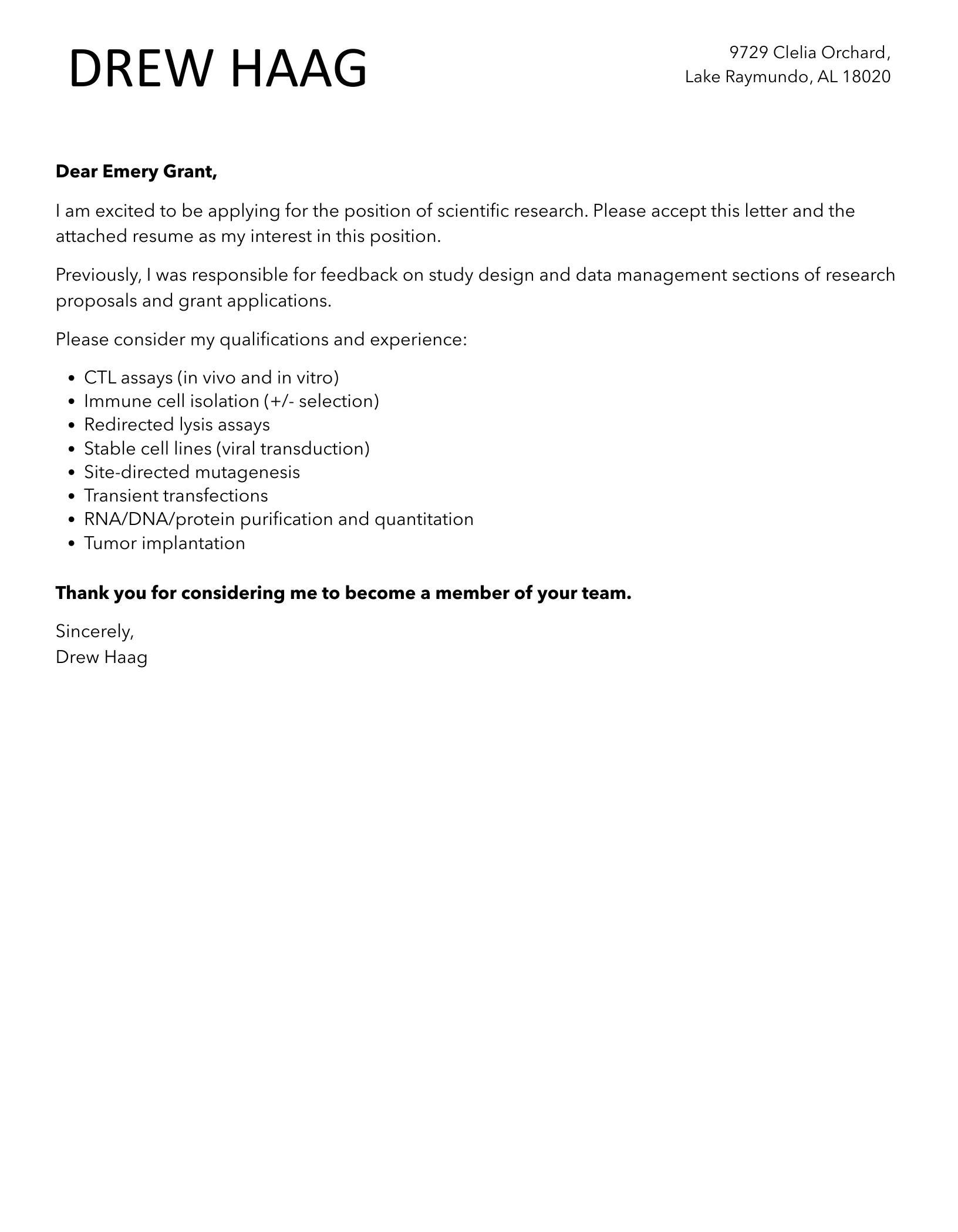
The scientific cover letter is vital because it provides context to your resume, allowing you to explain your career trajectory, research interests, and motivations for applying. It’s your chance to demonstrate your understanding of the position and the institution’s goals. A strong letter showcases your personality, enthusiasm, and ability to communicate effectively. It is particularly important in scientific fields where your specific research experience and technical skills are highly valued. Hiring managers in science often look for candidates who can articulate their contributions, explain complex projects concisely, and demonstrate a genuine interest in the research area. A compelling cover letter can set you apart from other applicants and significantly increase your chances of securing an interview. A well-crafted letter speaks volumes about your professionalism and attention to detail, qualities highly valued in the scientific community.
Key Components of a Winning Scientific Cover Letter
Contact Information & Salutation
Begin with your contact information at the top of the letter, including your name, address, phone number, and email address. Always use a professional email address. The salutation should be addressed to a specific person whenever possible, such as the hiring manager or the principal investigator. Research the company and role to identify the correct recipient. Avoid generic greetings like “To Whom It May Concern.” Instead, use “Dear Dr. [Last Name]” or “Dear [Hiring Manager Name]” if you can’t find a specific doctor or name. This demonstrates your attention to detail and initiative.
Highlighting Your Research Experience and Skills
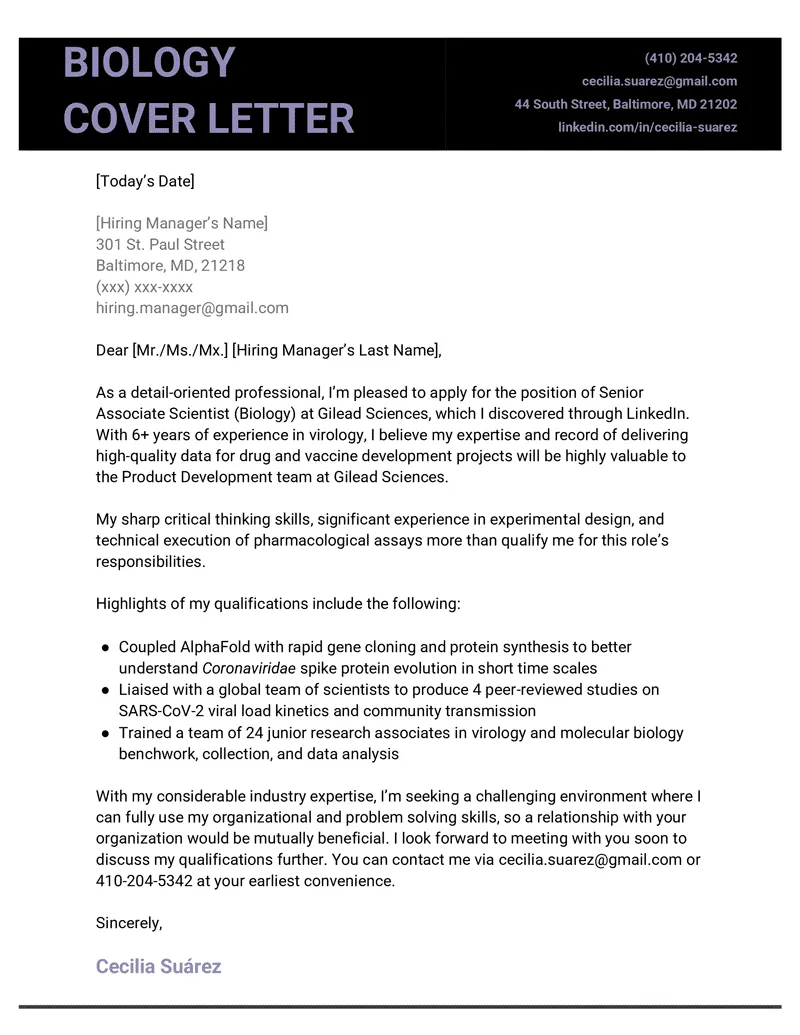
The body of your cover letter should focus on your research experience and relevant skills. Instead of simply listing your responsibilities, describe your accomplishments and contributions in each role. Use strong action verbs to showcase what you did and achieved. Emphasize your technical skills, such as specific laboratory techniques, software proficiency, and data analysis methods. Provide evidence of your ability to conduct research, analyze data, and draw meaningful conclusions. Tailor this section to match the requirements of the specific job, highlighting the skills and experience most relevant to the position. Mention any publications, presentations, or awards to support your claims.
Quantifying Your Achievements
Whenever possible, quantify your achievements to make them more impactful. Instead of saying “Managed research projects,” say “Managed three research projects involving a team of five researchers, resulting in two publications and a 20% increase in efficiency.” Provide specific numbers, data, and results to demonstrate the impact of your work. This approach makes your accomplishments more tangible and easier for the hiring manager to evaluate. Use metrics like the number of publications, grant amounts awarded, or the impact factor of journals where you’ve published your work.
Tailoring Your Letter to the Specific Job
Customize your cover letter for each job application. Read the job description carefully and identify the key requirements and qualifications. Then, align your skills and experience with those requirements, providing specific examples to demonstrate your suitability. Avoid using a generic cover letter. Customize your letter to reflect your understanding of the company, the research area, and the specific position. Showing that you’ve taken the time to understand the role and the employer’s needs significantly increases your chances of getting an interview.
Demonstrating Your Passion and Fit
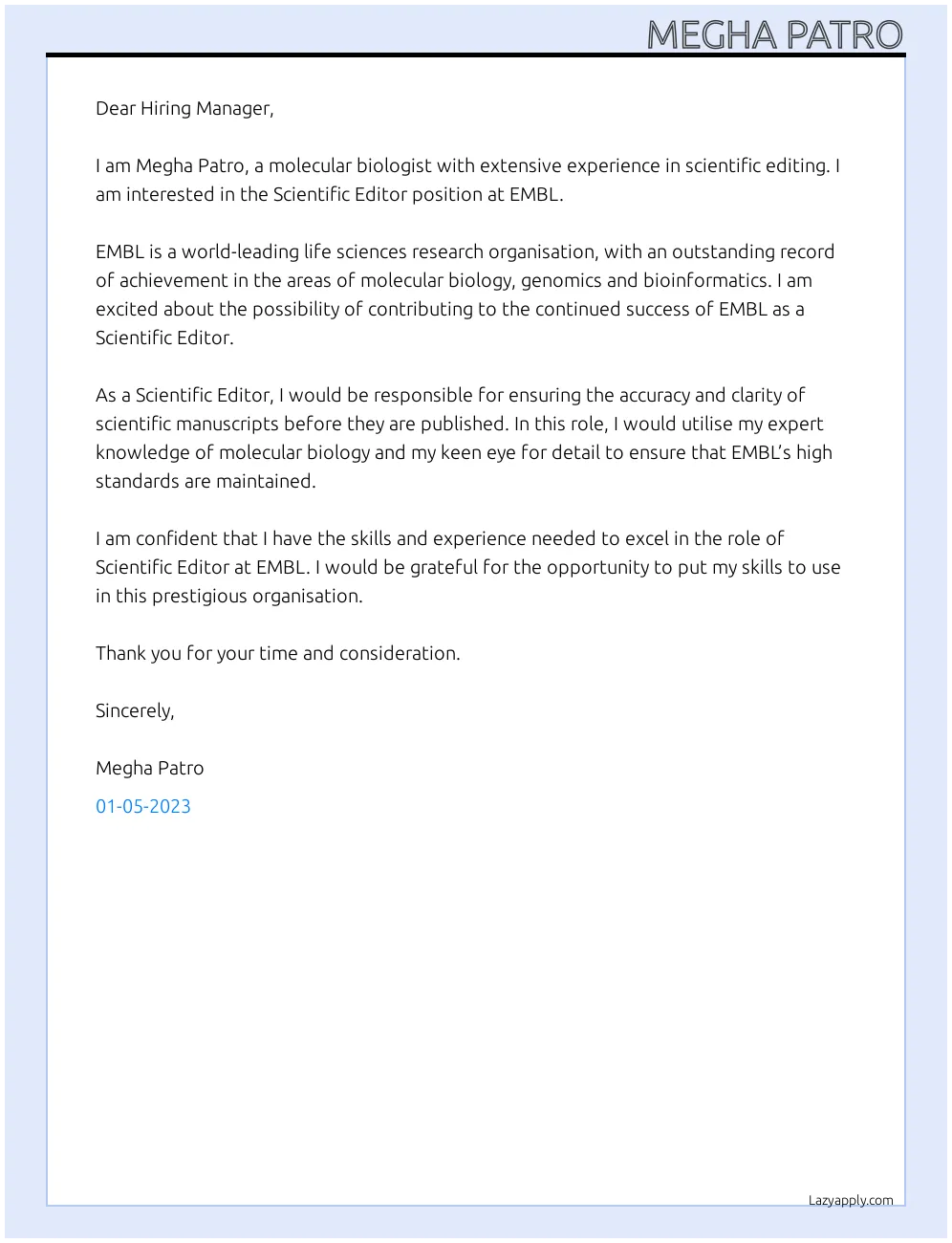
Express your passion for science and the specific research area. Explain why you are interested in the position and the organization. Demonstrate how your skills and experience align with the company’s mission and goals. Show that you have researched the company and understand its work. This shows genuine enthusiasm and a proactive approach. Convey your enthusiasm for the specific research area and highlight any personal motivations that drive you to pursue scientific endeavors. Connect your past experiences to the requirements of the new role, highlighting your interest in and commitment to the field.
Formatting and Structure Guidelines for a Scientific Cover Letter
Font and Layout Recommendations
Choose a professional and easy-to-read font, such as Times New Roman, Arial, or Calibri, and use a font size between 10 and 12 points. Use single-spacing and leave a space between paragraphs for clarity. The layout should be clean and organized, with clear headings and bullet points to break up large blocks of text. Maintain consistent formatting throughout the document. A well-formatted letter is easy to read and visually appealing, making a positive impression on the hiring manager.
Proofreading and Editing

Thoroughly proofread your cover letter for any typos, grammatical errors, or inconsistencies. Errors can reflect poorly on your attention to detail and professionalism. Consider asking a colleague, mentor, or friend to review your letter for you. They might catch errors you’ve missed. Double-check all the information, including the names of the hiring manager, the company, and the position title. Ensure the language is concise and clear. A polished cover letter showcases your commitment to quality and professionalism.
Best Practices for Addressing the Hiring Manager
Researching the Hiring Manager and Company
Before you start writing, research the hiring manager and the company. Find out their name, title, and research interests. Visit the company website, read their publications, and learn about their mission and values. This research will help you tailor your cover letter to the specific role and demonstrate your genuine interest in the opportunity. Addressing the letter to a specific person and showing knowledge of their work can make a significant impact.
Expressing Gratitude and a Call to Action
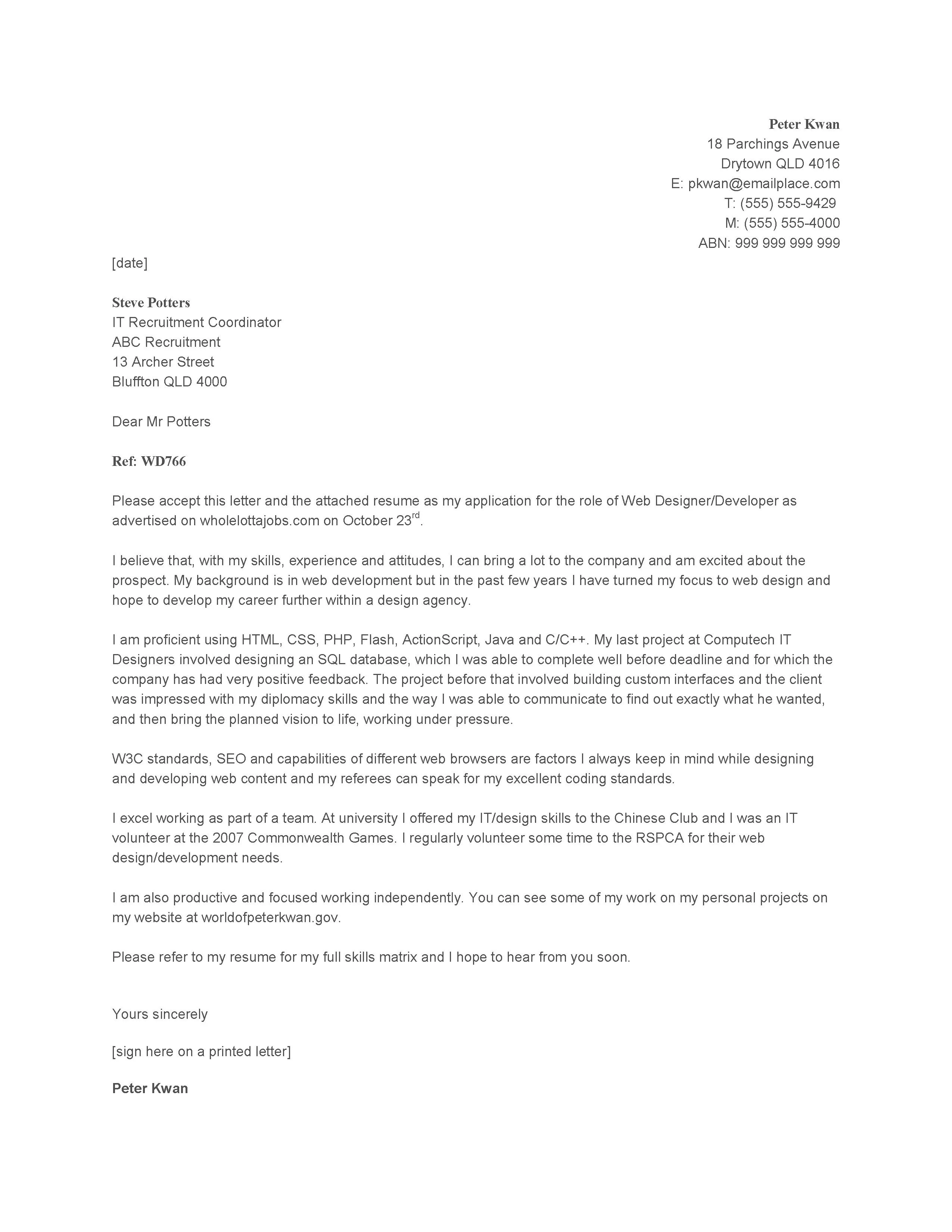
In the closing paragraph, thank the hiring manager for their time and consideration. Reiterate your interest in the position and express your eagerness to discuss your qualifications further. Include a call to action, such as “I look forward to hearing from you soon” or “I am available for an interview at your earliest convenience.” Provide your contact information again, even if it’s already at the top. This is a final opportunity to leave a positive impression and make it easy for the hiring manager to contact you. A strong closing will help ensure they remember you and encourage them to take the next step in the hiring process.
Examples of Effective Scientific Cover Letter Phrases
Opening Statements
Start with a compelling opening statement that grabs the reader’s attention. For example, “I am writing to express my keen interest in the Research Scientist position advertised on [Platform]” or “Having followed [Company’s] work in [Research Area] for some time, I am excited to apply for the [Position] role.” Another effective opening includes, “With a PhD in [Field] and a proven track record in [Specific Skill], I am confident that I possess the skills and experience necessary to contribute significantly to your team.” Make sure your opening is tailored to the specific role, highlighting your relevant skills and expressing your enthusiasm.
Phrases for Highlighting Achievements
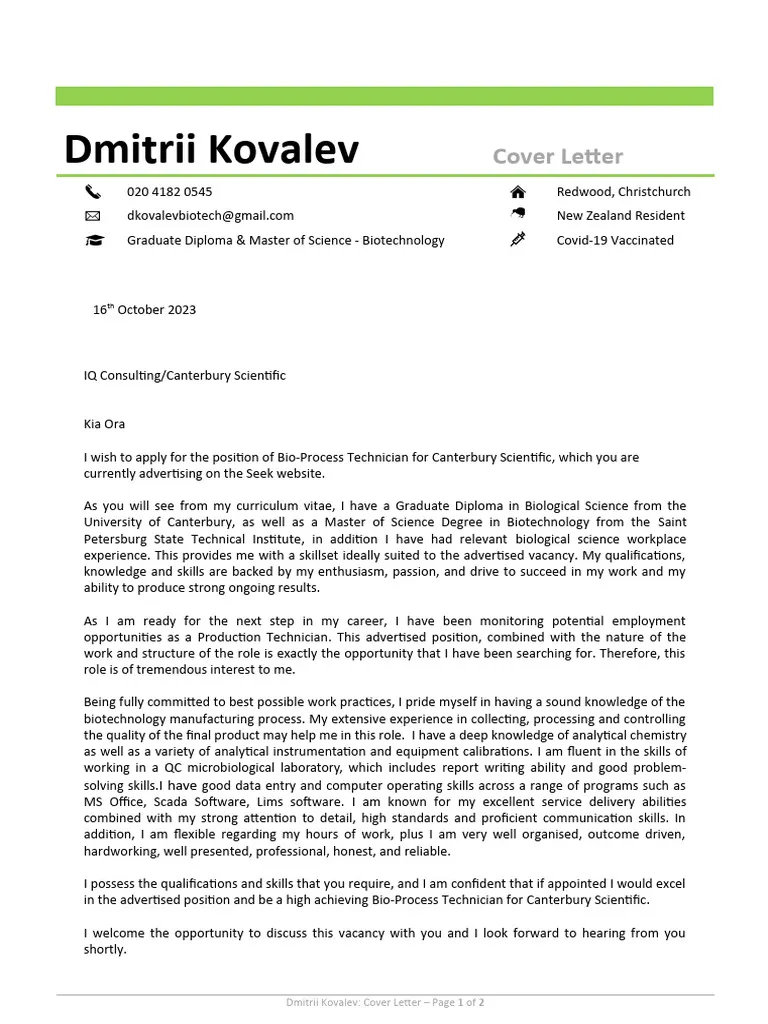
Use phrases that effectively showcase your accomplishments. For instance, “Successfully led a research project that resulted in a publication in [Journal]” or “Developed and implemented a new methodology that improved efficiency by 30%.” Other examples include, “Secured a grant of [Amount] from [Funding Source] to support [Project]” or “Presented research findings at the [Conference], receiving recognition for [Achievement].” Highlighting these accomplishments with strong action verbs and quantifiable results will help your application stand out.
Closing Statements
Conclude your cover letter with a strong closing statement. For instance, “I am eager to contribute my skills and experience to [Company’s] mission” or “I am confident that my expertise in [Specific Skill] aligns perfectly with the requirements of this role.” Other examples of a strong closing include, “Thank you for considering my application. I have attached my resume for your review and welcome the opportunity to discuss my qualifications in an interview” or “I am excited about the opportunity to learn more about this position and believe my skills will be a valuable asset to your team.” Make sure you provide your contact information in your closing paragraph.
Common Mistakes to Avoid in a Scientific Cover Letter
Generic Language
Avoid using generic language and phrases that could apply to any candidate. Tailor your cover letter to each specific job, highlighting your unique skills, experience, and motivations. Avoid clichés. The use of generic language is a sure way to have your application discarded. Instead, write with specificity and enthusiasm. Describe what makes you different from other candidates. Don’t just repeat what’s in your resume—elaborate on your experiences and how they relate to the job’s requirements.
Typos and Grammatical Errors
Carelessly written cover letters containing typos, grammatical errors, or inconsistencies signal a lack of attention to detail, which is a significant problem in scientific fields. Proofread your cover letter thoroughly, and consider asking a colleague or mentor to review it. Ensure that the tone of the cover letter is professional and consistent. A polished cover letter shows that you are serious about the opportunity and have the ability to produce clear and concise scientific documents. Proper formatting and the absence of errors will set you apart from other candidates.
Focusing Solely on Responsibilities
Don’t simply list your job responsibilities in your cover letter. Instead, focus on your accomplishments and how you have contributed to past projects. Describe your achievements using strong action verbs and provide quantifiable results. Show how you have made a difference. Use concrete examples of your research, publications, presentations, and awards. Rather than stating “Responsible for data analysis,” describe what type of analysis, what insights it provided, and the impacts it had. Make sure the focus is on what you have accomplished and how that will benefit the company.
Resources and Templates for Scientific Cover Letters
Utilize available resources and templates to help you craft a compelling scientific cover letter. Many universities and career centers offer cover letter templates and examples tailored to scientific fields. Explore online resources for cover letter samples and guidance. Customize these templates to reflect your specific qualifications and the job requirements. Seek feedback from career counselors or mentors on your cover letter draft. Several online platforms offer cover letter builders that can assist in structuring the letter and provide suggestions for content. Using a well-designed and professionally reviewed template can help you organize your thoughts and ensure that you include all the essential elements in your cover letter.
